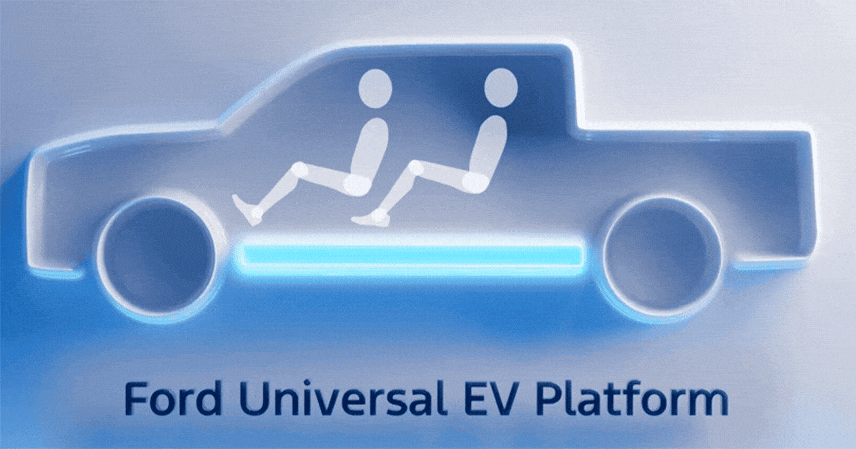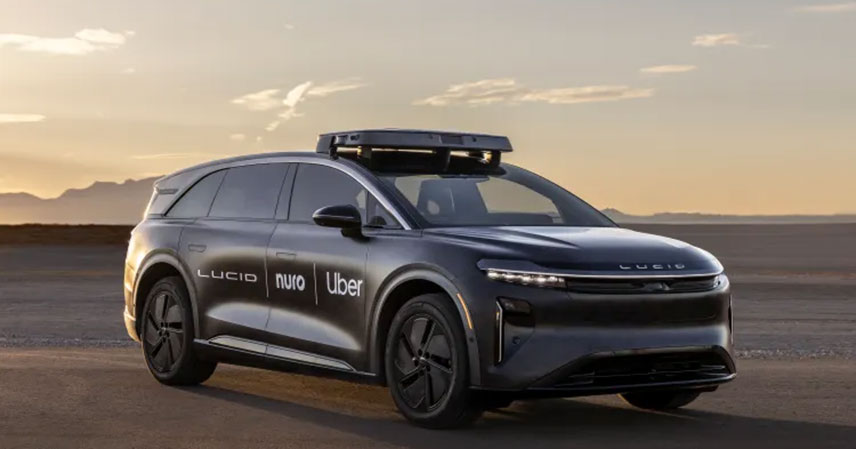Ford is shaking up the automotive industry with a radical new approach to electric vehicle (EV) manufacturing. Forget the traditional assembly line; Ford is introducing a revolutionary three-piece assembly system, promising faster production, lower costs, and a new era of EV design. This innovative process is not just a tweak; it’s a complete paradigm shift that could redefine how electric cars are built.
CEO Jim Farley unveiled this groundbreaking technology, highlighting its potential to significantly impact the EV market. The implications extend far beyond simply streamlining production; this new system has the potential to reshape the entire EV landscape, making electric vehicles more accessible and affordable for consumers worldwide.
What Happened? 📝
Ford’s new “Ford Universal EV Production System” divides the car into three main sections: the front, middle, and rear. These sections are assembled independently and then joined together at the end of the production line. This contrasts sharply with the traditional linear assembly line where cars are built piece by piece.
This “assembly tree” approach allows for three simultaneous sub-assemblies, drastically speeding up the overall production process. The modularity also allows for greater efficiency and reduces the number of workstations required.
The Innovation Behind the 3-Piece System ⚙️
The key to this revolutionary system lies in the use of large, single-piece aluminum unicastings for each section. These replace dozens of smaller parts, simplifying assembly and reducing the number of fasteners needed.
This significantly reduces complexity, making the process faster and more efficient. The elimination of numerous smaller parts also contributes to cost savings and improved reliability.
Benefits of Ford’s New Production Method 📈
Ford claims its new system will be 40 percent faster than its existing process, with a comparable reduction in workstations. This translates to increased production capacity and significant cost savings.
The number of parts needed is reduced by 20 percent, and the number of fasteners (bolts, nuts, screws, etc.) is down by 30 percent. Even the wiring harness in an upcoming midsize truck will be nearly a mile shorter and 10 kg lighter!
The Ford Universal EV Platform 🚗
This innovative production system is paired with a new vehicle platform: the “Ford Universal EV Platform.” This 400-volt architecture is designed for scalability and modularity, allowing Ford to adapt it for a variety of EV shapes and sizes.
A crucial element is the integration of Ford-made lithium-iron phosphate (LFP) prismatic batteries. These are 30 percent cheaper than traditional lithium-ion batteries and are used as part of the vehicle’s structural floor, enhancing safety and reducing overall weight.
The First Vehicle and its Implications ⚡️
The first vehicle to utilize this new platform and production system will be a midsize four-door electric pickup truck, launching in 2027. With a targeted starting price of $30,000, Ford aims to make electric vehicles more accessible to a wider range of consumers.
The truck is expected to offer performance comparable to a Mustang EcoBoost, while providing more passenger space than the Toyota RAV4, presenting a compelling alternative in the electric pickup truck market.
Key Takeaways 🔑
- Ford’s new three-piece EV assembly system promises a 40% increase in production speed.
- The system reduces parts by 20% and fasteners by 30%, leading to significant cost savings.
- The new Ford Universal EV Platform is scalable and modular, allowing for diverse EV models.
- The use of cheaper LFP batteries contributes to a more affordable and accessible EV offering.
- The first vehicle from this platform, a midsize electric pickup truck, is slated for release in 2027.
Ford’s revolutionary approach to EV manufacturing is a significant development in the automotive industry. By streamlining production, reducing costs, and enhancing design flexibility, Ford is poised to reshape the future of electric vehicles, making them more affordable and accessible to a global market. The success of this new system could have far-reaching consequences, influencing not just manufacturing, but the entire EV landscape, which continues to face complex challenges like the legal tightrope of Tesla’s Robotaxi service.
Source: Ford’s Answer to China: A Completely New Way of Making Cars



